Australia’s population grew by an extraordinary 8.5 million (45%) over the first 25 years of this century, far exceeding the population growth of other advanced nations.
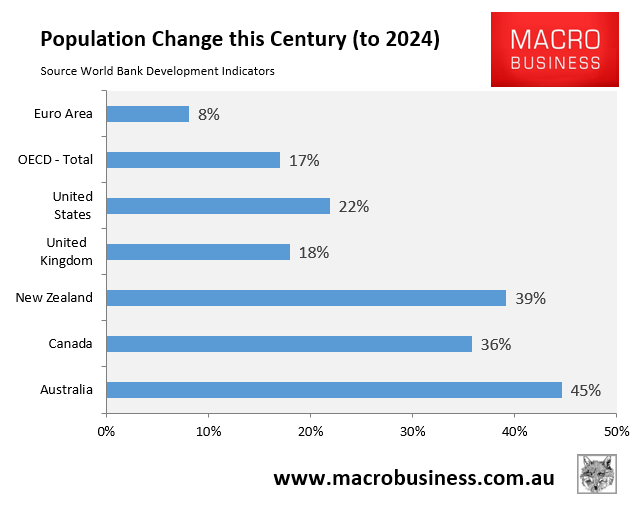
Over the four years from Q1 2021 to Q1 2025, Australia’s population grew by an estraordinary 1.88 million (7.9%)—equivalent to adding an Adelaide and Hobart to the nation’s population.
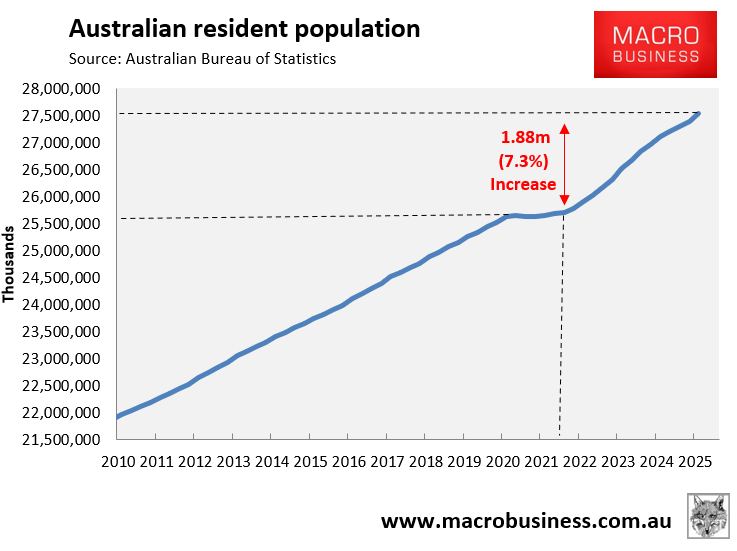
AMP chief economist Shane Oliver showed how Australia’s housing market became structurally undersupplied after net overseas migration more than doubled in the mid-2000s and annual population growth jumped by 150,000 annually:
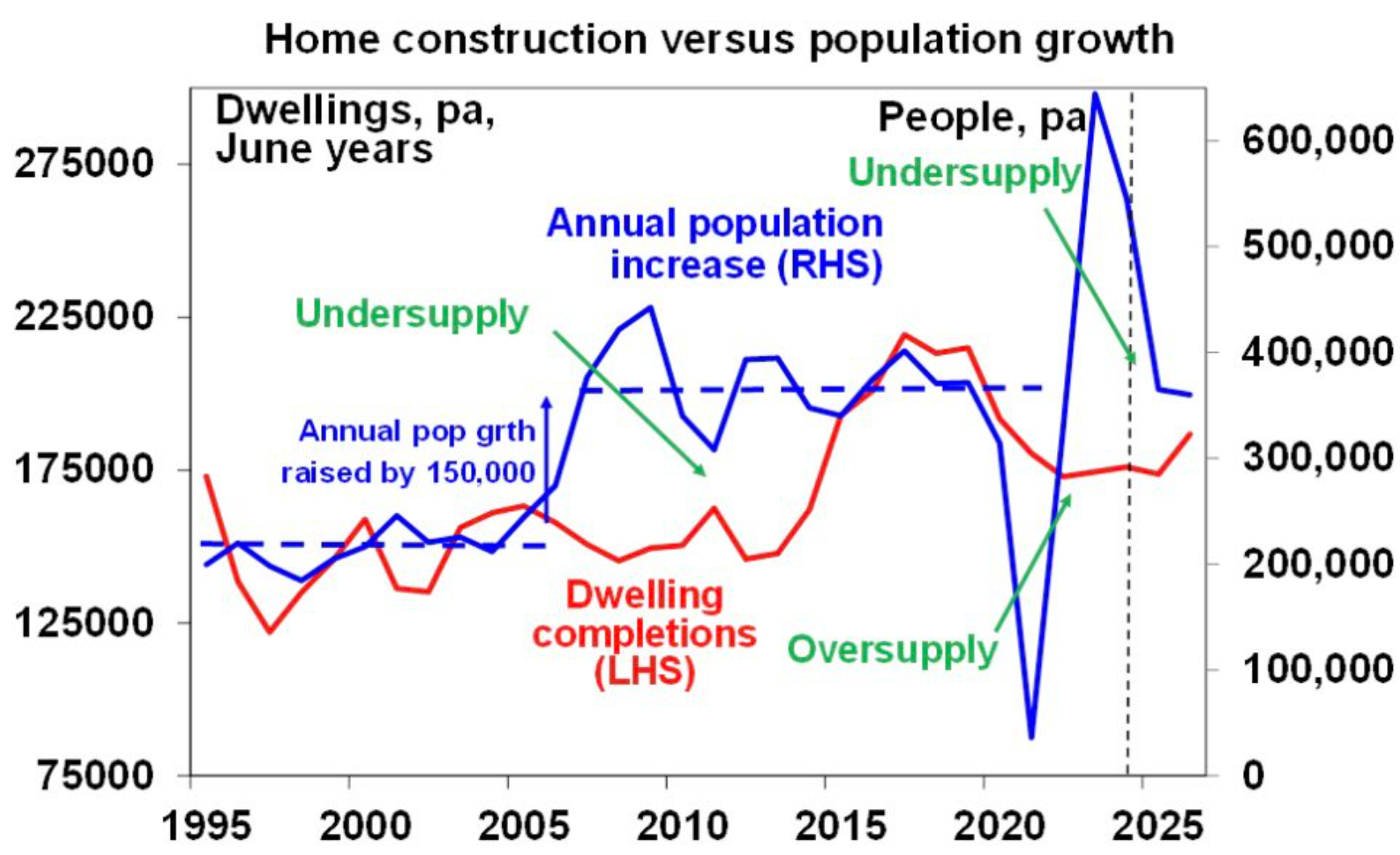
Source: Shane Oliver
As a result, Australia is currently experiencing a cumulative housing shortage of 200,000 homes, which the National Housing Supply and Affordability Council (NHSAC) forecasts could double over the five years to 2028-29 in the likely event that the population grows by 15% faster than Treasury anticipates.
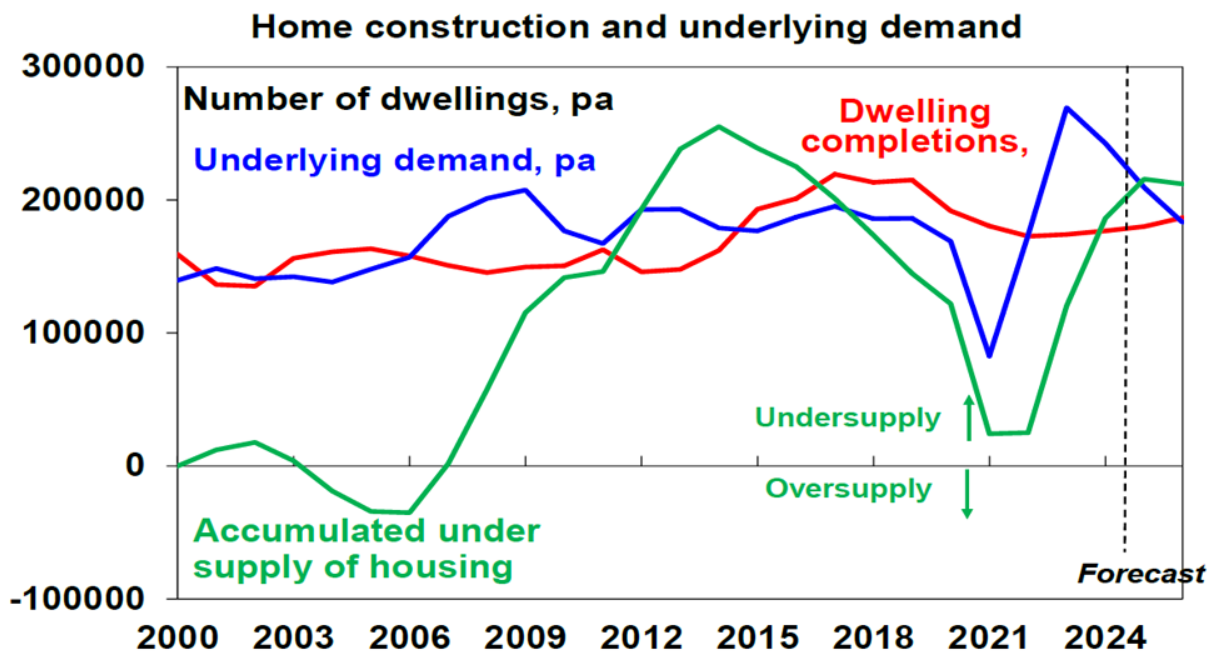
Source: Shane Oliver (AMP)
Master Builders Australia forecasts that an additional 90,000 “tradies” are needed to address the nation’s housing shortage. It wants to see more women, who account for just 4.5% of trade-qualified workers and 13.6% of the overall construction jobs nationally, take up trades to boost the construction workforce.
“We are 90,000 trade-qualified people short to do the work we know we need to resolve the housing crisis. That doesn’t even count the numbers we need for the energy transition”, said Master Builders Australia chief executive Denita Wawn.
“It is an indictment on the industry that the figure [of women with trades] is that low, particularly when we’ve got such significant skill shortages, that we still can’t attract half of the working population”.
Wawn previously called for more skilled migrants to address the housing crisis.
“Immigration is putting pressure on housing, but perhaps not the way people think it is”, Wawn said.
“We simply have not had enough skilled migrants coming into this country to help us build what we need to build to resolve our housing crisis”.
“There is a migration crisis for housing, but for us, it’s a crisis relating to not enough migrant workers”.
Having more women take up trades could certainly help ease labour shortages; although it will remove potential workers from other areas, such as healthcare, which are female-dominated.
The bigger issue is that migrants are vastly underrepresented in the construction industry.
“Migrants who arrived in Australia less than five years ago account for just 2.8% of the construction workforce, but account for 4.4% of all workers in Australia”, the Grattan Institute reported.
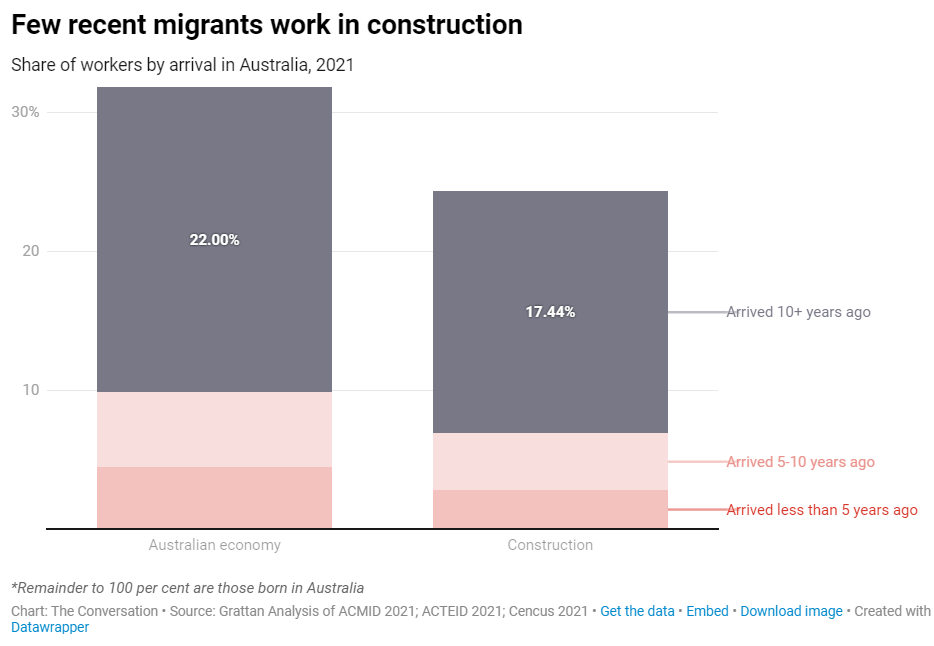
In a similar vein, the latest Build Skills Australia report lamented that few recent migrants actually work in construction, meaning that immigration is worsening housing shortages:
“Only 3.2% of recent immigrants—those who arrived in the last decade—are employed in the residential construction sector. This indicates that immigration’s contribution to population growth has not been matched by its contribution to the workforce needed to construct housing for these additional residents”…
“This dynamic highlights the importance of aligning migration settings with labour market demands. As it stands, the residential construction share of the immigration intake must increase by as much as 40% before it can be considered a viable strategy for boosting labour supply”.

The Australian National University’s Migration Hub also admitted that Australia’s immigration is worsening Australia’s housing and infrastructure shortages by dramatically lifting demand without adding to labour supply:
“In 2023-2024, the permanent programme delivered just 166 tradespeople, negligible against national needs. By contrast, more than 5,000 entered via the temporary skilled stream in 2024-2025”.
“Even this is insufficient to close the gap”.
Let’s get real: 428,700 net overseas migrants arrived in 2023-24 but only around 5,000 were tradespeople. Therefore, migrants have added far more to housing demand than supply.
Therefore, Australia should seek more migrants with tradie skills rather than Uber drivers.
At the same time, we also urgently need to reduce the overall number of migrants to decrease demand and alleviate the housing shortage.
Were Australia to import 90,000 construction workers and tradies, it would need up to 90,000 homes to accommodate them and their families. Australia would also require more nurses, teachers, infrastructure, and other services for these migrants.
This explains why Australia’s two decades of world-leading immigration have failed to address skill shortages across the economy, resulting in a futile game of “Whack-a-Mole.”
If immigration were the solution to skills shortages, Australia’s shortages would have improved rather than worsened.
The country has imported millions of migrants over the course of 20 years. Yet, Australia’s skills shortages are greater than ever. The country’s productivity is low, and there are chronic shortages of housing, infrastructure, and services.
Poor management of Australia’s immigration system has resulted in skills shortages across the economy.
We have too many migrants working in oversupplied, low-productivity, low-paying service jobs despite professing to be “skilled”.
Australia needs a migration program that is significantly smaller and better targeted at genuine skills the economy needs. Then we might actually solve the nation’s chronic housing and infrastructure shortages.

